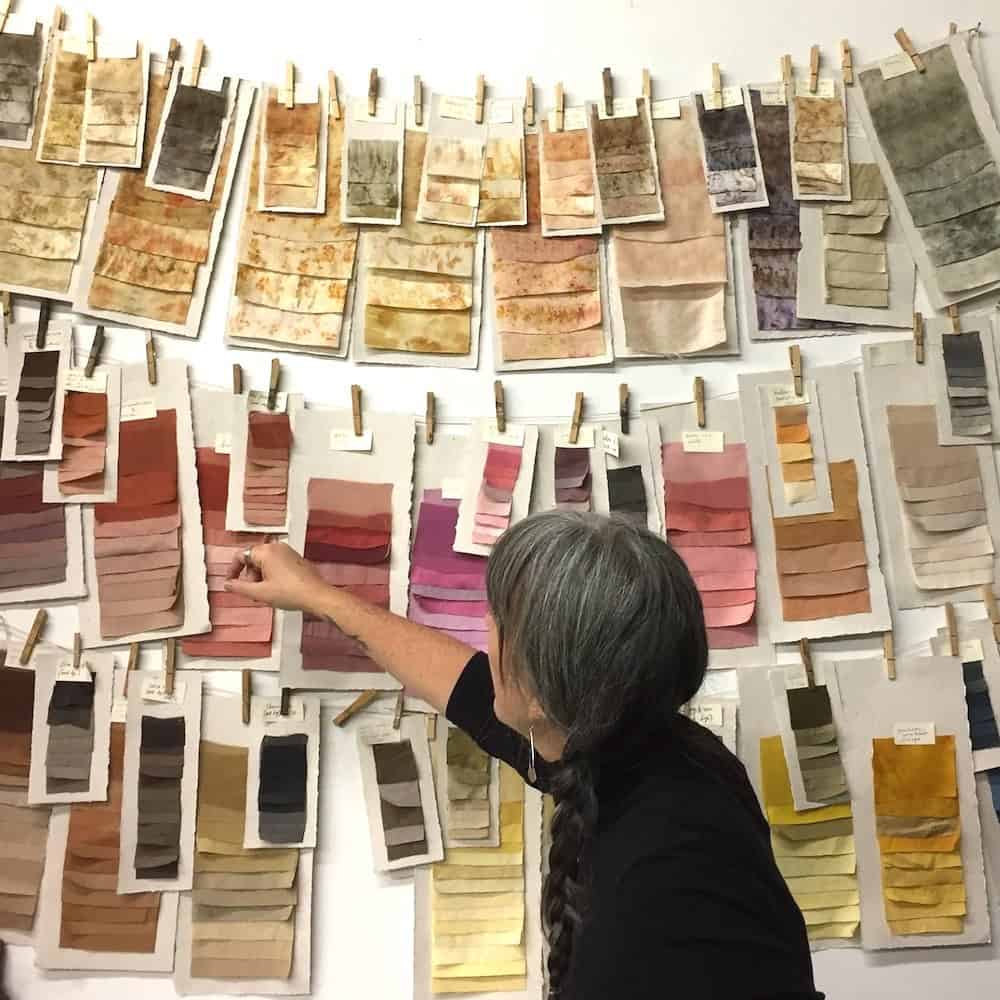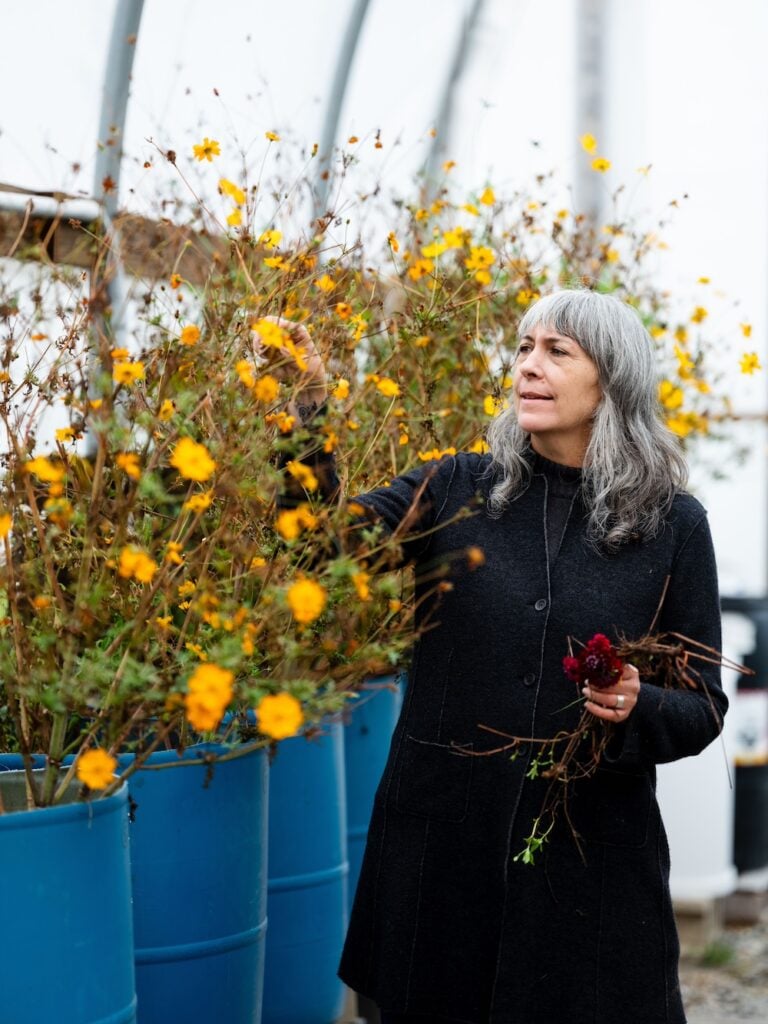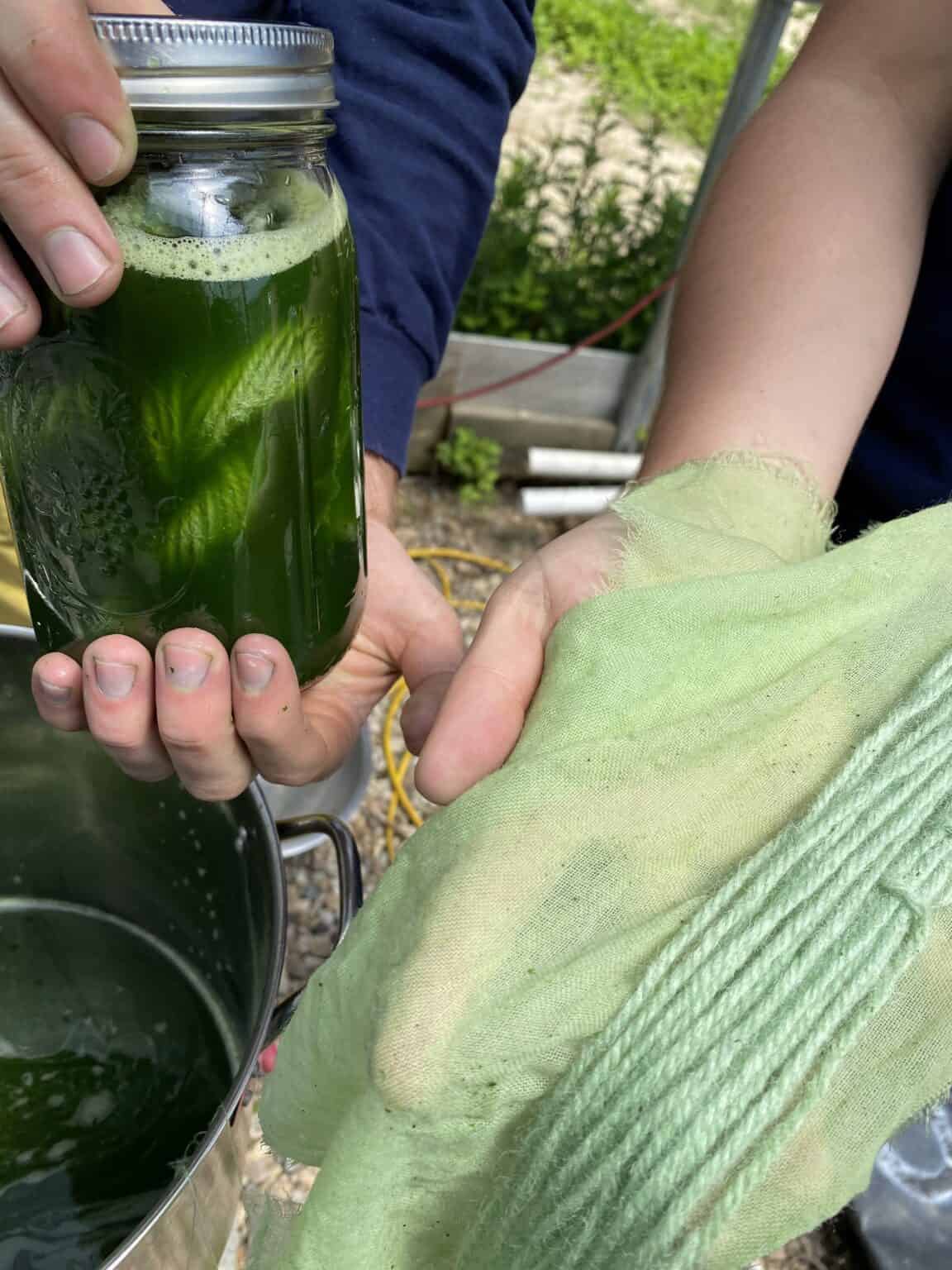Amy we miss you so at Botanical Colors, so much we needed to have you back on our Interview series that you started. We would love to catch up with you and tell everyone what amazing projects you have been working on. So here goes it! Amy is a storyteller, writer, and consultant passionate about bioregionalism, textiles and protecting water.
She brings together diverse perspectives that drive innovative environmental solutions. Her work sheds light on the challenges facing the textile industry but also the successes pioneered by designers, artisans, filmmakers, scientists and futurists committed to a more sustainable and equitable future.

- Could you introduce your role with the Southeastern New England Fibershed and describe its mission?
The Southeastern New England Fibershed was created around 9 years ago and instead of what you might think that we are a textile organization, I stand firm that this is an environmental organization. Each of our current 60 members utilize their art, farming,weaving, knitting, and natural dyeing as a way to put a spotlight on localism and environmental issues.
By staying true to our original mission of creating a space to support and cultivate fiber and natural dye economies, we also put a spotlight on our members who support and give back to our region of Massachusetts and Rhode Island.
- What inspired you to work with regional fibersheds and connect farmers, processors, and textile businesses?
As a journalist of over 25 years, 15+ in sustainable fashion, I was always in awe that we talked about farmers and fiber and dyes, without ever having a farmer in the room! Without the farmers, we don’t have textiles unless we are talking about recycled plastics and petroleum-based clothing. That’s not an area I want to support.
When I learned about Rebecca Burgess and her Backyard Hoodie project and the Fibershed concept of soil to soil and designing for decomposition, it was such a fresh and exciting angle on how we could design clothing and textiles for the future. I was definitely told my ideas, as well as Rebecca’s, were backward when thinking about the fashion industry but I always told people no way, this is the future.

Can you share some of the biggest challenges and successes you’ve encountered while building a regional fiber supply chain?
It’s REALLY hard to sell the idea of clothing grown, sewn and manufactured within a small region at the price point it will retail at. What we are talking about with most fibershed-made clothing is truly luxury. What’s great about all the 75+ fibersheds worldwide, is that they are, as I am, offering a local supply chain that might offer yarn to make that amazing sweater, fabric to make a beautiful dress, or dye plants you can purchase to dye your own clothes.
While that has been really exciting to me for years, I’ve gone back to the farmer to better understand why they still struggle and in the case of sheep farmers, why there’s such an incredible amount of wool waste. I’ve just wrapped up a Northeast Wool Pilot Study grant that was year 4 of my focus on wool waste and interestingly enough, it all comes back to supporting the farmer in a new way, by finding new products to make with the wasted wool.
So I’ve had a huge shift from focusing on clothing to building materials. It feels way more exciting to me and really broadens the conversation beyond our lovely fibershed choir.

- Can you tell us more about your new focus?
Over the course of this past year I have spoken with and visited 20 Northeast spinning mills, surveyed and talked with 70 farmers, two scouring machine manufacturers and countless weavers, knitters, bio materials practitioners, landscape architects and fibersheds. All were part of an ongoing conversation around how much wool is being wasted, what quality it is, why the stockpiling of it, resources to keep it moving off-farm and new materials that could be created for the building and gardening industry. The uses are endless.
What is consistent when it comes to wool (or alpaca!) being wasted is farmers would love the help to get any money for it if there was. The majority of farmers that want to process their wool say they need help in reaching a wider market to sell their product, and that it’s not economically viable to pursue this path due to the amount of time it takes to do marketing research alongside running a farm.
So I’m working on finding funding to continue the work and to use an exciting map designed by a professor at the Rhode Island School of Design (RISD) that I hope all fibersheds can use. It will cut out the middleman and bring the farmer direct to the consumer very much like a Facebook Marketplace or Craigslist.
- Do you think with fibersheds working together more, there can be more change within the textile as well as building/gardening industries?
100%. The days of working alone as a fibershed need to be rethought. Just today I had a colleague reach out about shirting fabric for an indie designer and a university asking if they could get a lot of waste wool for a class project. If we can connect the fibersheds more to work regionally, and understand what we have from farming to processing, we can support sustainable growth for our local communities. We can have way more sway when we come across opportunities.
Here in the Northeast, the Vermont, Maine, Northern New England, Western Mass, Southeastern New England, Connecticut and New York fibersheds were able to come together to create a manufacturing document representing all of our fibersheds. Having that helps me direct that designer to a source I might not have known about in another state.
- Tell us about your work with the Massachusetts Alternative Septic System Technology Center (MASSTC). What are the main goals of your communications and research there?
I left Botanical Colors 2 years ago to take on this job in wastewater as it was something very personal to me having been born, raised and lived most of my life here on Cape Cod. With most of our bodies of water here, both ocean and ponds now considered unacceptable to be in, I had to focus on what was and is going on and be pro-active in some way.
I am currently working as communications lead for MASSTC continuing work I have done for them for the past 3 years. It feels very similar to working in the textiles world trying to get people to wrap their brains around why they should care about the environment.
If there’s one thing I’ve learned as a writer and activist over the past few decades is that you can’t force someone to believe in what you believe in. It takes time and lots of education and making something that seems insurmountable, approachable. It takes humor and good stories across a number of platforms and the willingness to listen and not judge. To meet people where they are. In wastewater as in plant dyes, you have to find something they relate to so they want to know more, become emotionally invested, and see they too are now part of the story.
- What advice would you give to someone interested in getting involved in regenerative textile or water management projects?
Come to the table with passion. You cannot do this work without a ton of it. Be curious. Ask tons of questions. Don’t be afraid of not knowing everything. Zero in on a problem you can’t believe can’t be solved in 2025 and like the explorers and inventors before us, work towards being part of the amazing solution.
Did you miss Amy’s Community Y.A.K.A? Watch here!
Amy also has an amazing NO SWEATSHOP Shirt you can purchase here: https://senefibershed.org/no-sweatshop-t-shirt/ . All proceeds go to support the Southeastern New England Fibershed!
